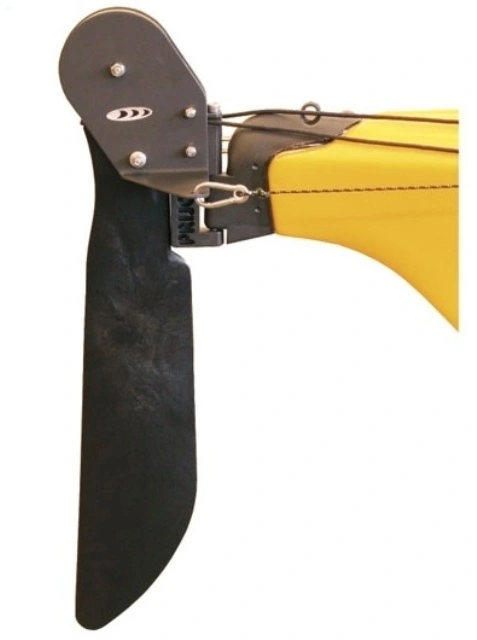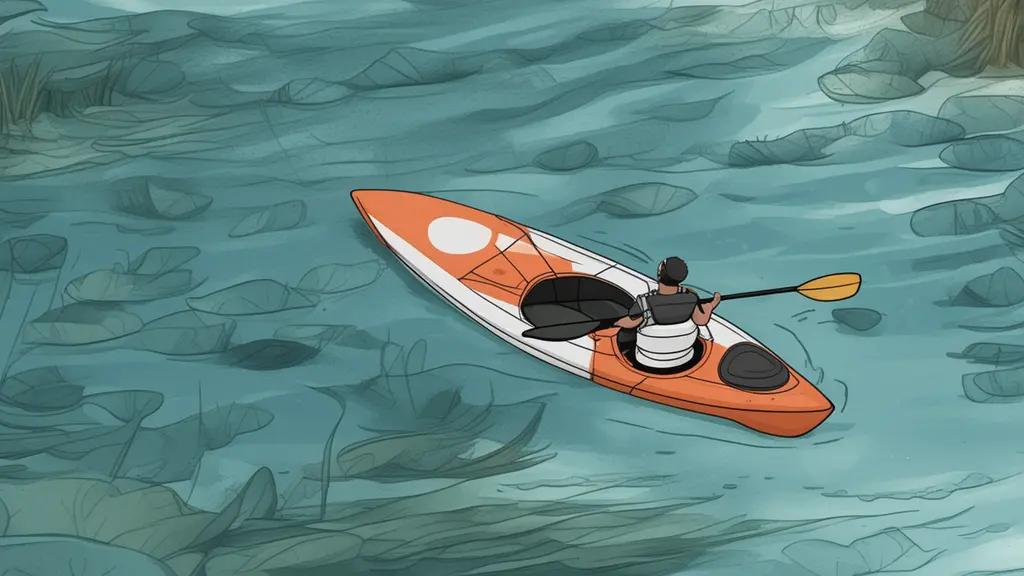Kayaking, an age-old activity used for both recreation and transportation, has seen numerous design and functional innovations over the years. One such feature, often debated among enthusiasts, is the inclusion of a rudder on a kayak. While traditionalists might prefer the purity of a rudderless kayak, there’s no denying the practical benefits offered by kayaks equipped with this steering aid. In this article, we will delve deep into the advantages of using kayaks with rudder.
What is a Rudder and How Does It Work?

Before diving into the benefits, it’s essential to understand what a rudder is and its function. Attached to the stern (or back) of the kayak, a rudder is a flat blade that can pivot from side to side. By adjusting the rudder’s angle, the kayaker can influence the boat’s direction without the need to paddle differently on one side or the other. The kayaker typically controls the rudder with foot pedals, allowing for hands-free steering while paddling.
Benefits of a Rudder
Enhanced Steering Control
The primary advantage of a rudder is the improvement in steering. With a rudder-equipped kayak, making slight adjustments to your course, especially on long stretches, becomes easier. It allows the paddler to maintain a straight line during strong crosswinds or currents, reducing the need for continuous corrective strokes.
Increased Stability
When battling against choppy waters, a rudder can serve as an extra stabilizing force. By making minor adjustments with the foot pedals, the kayaker can counteract the boat’s natural tendency to veer off course due to external factors, resulting in a smoother and more stable kayaking experience.
Improved Energy Efficiency
Correcting the kayak’s direction with paddle strokes can be energy-consuming, especially on longer trips. With a rudder, the need for such corrections diminishes, conserving the paddler’s energy. This increased efficiency can make the difference on extended excursions, where every ounce of energy saved is crucial.
Adaptability to Diverse Water Conditions
Different water conditions pose unique challenges. While calm waters might not necessitate the use of a rudder, it becomes almost indispensable in rapidly flowing rivers or windy coastal areas. A kayak with a rudder is adaptable to a broader range of water conditions, ensuring you’re prepared for whatever Mother Nature throws your way.
Common Misconceptions About Rudders
While the benefits are numerous, there are misconceptions that sometimes cloud the judgment of potential kayak buyers.
- “Rudders are a crutch for poor paddling technique.” While it’s true that learning fundamental paddling skills is essential, a rudder is a tool to enhance the kayaking experience, not a replacement for proper technique.
- “Rudders add unnecessary weight.” Modern rudders are lightweight and, when considering the energy and time they can save, their slight addition to a kayak’s weight becomes negligible.
Deciding if a Rudder is Right for You
Not every kayaking adventure requires a rudder. If you’re paddling in calm, sheltered waters or are on a short trip, you might find little use for one. However, if you anticipate facing challenging conditions or are planning longer excursions, a kayak with a rudder can be an invaluable asset.
When considering a rudder-equipped kayak, assess your primary kayaking environments, the length of your trips, and your proficiency level. If you see the potential for enhanced control, stability, and efficiency in your kayaking adventures, then a rudder might be the perfect addition to your setup.
Evolution of the Kayak Rudder
While modern rudders are seen as innovative add-ons, their history dates back centuries. Indigenous Arctic populations, the inventors of the first kayaks, used early rudders crafted from bones and other available materials. Understanding this history can shed light on the inherent value of rudders.
Historical Context
The earliest kayak rudders were about function over form. Driven by the need to navigate icy waters filled with obstacles, ancient kayakers needed better control than paddling alone could provide. These rudimentary rudders were often makeshift and non-mechanized, yet they laid the foundation for the advanced systems we see today.
Modern Improvements
Today’s kayak rudders are the product of extensive research, development, and innovation. Constructed from lightweight, durable materials like carbon fiber or high-grade plastics, they are designed for efficiency and minimal drag. Additionally, the control systems have evolved. Foot pedal controls, for instance, are ergonomic and offer finer control than ever before.
Rudder Maintenance and Care
Owning a kayak with a rudder requires some extra maintenance steps to ensure longevity and optimal performance.
Routine Inspection
It’s crucial to routinely check the rudder and its associated parts for any signs of wear and tear. Pay attention to the pivot points, cables, and foot pedals. Over time, these components might wear down or corrode, especially if exposed to saltwater.
Cleaning and Lubrication
After each use, especially in saltwater, rinse the rudder and its components with fresh water. It prevents salt buildup and corrosion. Periodically lubricate moving parts to ensure smooth operation.
Rudder vs. Skeg: What’s the Difference?
A common question arises among paddlers: What’s the difference between a rudder and a skeg? And which one is better?
Function and Design
While both are designed to aid in tracking and control, their mechanisms differ. A skeg is a retractable fin located in the middle or rear of the kayak. Unlike a rudder, it doesn’t pivot side-to-side but can be raised or lowered to adjust the kayak’s resistance to turning. A rudder, as discussed, pivots to change the kayak’s direction.
Which is Better?
The choice between a rudder and a skeg depends on personal preference and the conditions you usually paddle in. If you want the ability to steer with your feet, a rudder is your pick. If you just need help with tracking in windy conditions and prefer using paddle strokes for steering, a skeg might be more suitable.
Expert Tips for Utilizing a Rudder Effectively
For those new to ruddered kayaks, here are some expert tips:
- Practice in Calm Waters: Before tackling challenging conditions, get a feel for the rudder in calm waters. Learn how subtle foot movements can affect the kayak’s direction.
- Avoid Over-reliance: While it’s tempting to use the rudder for all turns, it’s essential to maintain your paddle turning skills.
- Combine Paddle and Rudder: For sharper turns or more control, combine paddle strokes with rudder adjustments.
Conclusion
Kayaks with a rudder offer a distinctive advantage over their rudderless counterparts in terms of control, stability, and efficiency. Whether you’re a seasoned pro looking for an edge or a newcomer wanting an adaptable boat, understanding the benefits of a rudder can guide you towards making an informed decision about your next kayak purchase.
Read more about kayaks:
- What to Wear for Kayaking in Summer
- How to Store a Kayak in the Garage
- What is a Skeg on a Kayak
- What is a Tandem Kayak
- How to Build a Homemade Kayak Launch
- How to Get in a Kayak
- What to Wear for Kayaking?
- How to Transport a Kayak Without a Roof Rack?
- How to Build a Kayak Rack for an RV?
- Are Inflatable Kayaks Safe?
- How to Build a Rack for Kayaks?
- Do Kayaks Have a Weight Limit?
- Wilderness Systems Pungo 120 Kayak Review
- Is it hard to kayak?
- How to Lock a Kayak?
- Where to Kayak with Manatees?
- Pungo 120 vs 125: Which is the Better Choice?

Hi, I’m Steve, the passionate kayaking enthusiast behind Outdoor Bravo. As an avid adventurer and nature lover, kayaking has been a central part of my life for as long as I can remember. My love affair with the water began during my childhood, and it has only grown stronger over the years. From serene lakes to rushing rivers and even challenging ocean tides, I’ve navigated various water bodies, seeking new thrills and unforgettable experiences.
